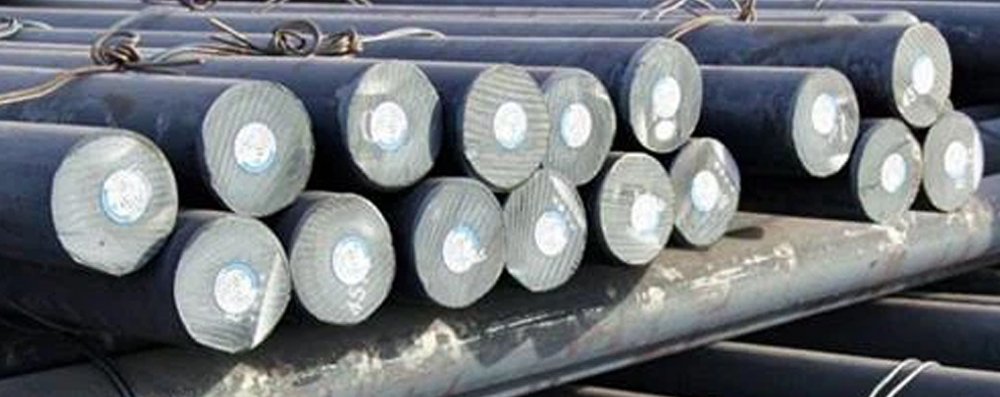Introduction
100Cr6 is a high-carbon, chromium-containing, low-alloy steel typically used for manufacturing rolling elements such as bearings, balls, and races. It is internationally equivalent to AISI 52100, DIN 1.3505, and EN31. Known for its exceptional hardness, high wear resistance, and excellent fatigue strength, 100Cr6 is an ideal choice for applications requiring high load-bearing capacity and wear resistance. This steel grade offers a fine-grained structure and high purity, crucial for parts subjected to repeated rolling contact and cyclic loading.
Properties of the Grade:
- High Hardness after Heat Treatment
- Excellent Wear Resistance
- Good Fatigue Strength under Rolling Contact
- Moderate Toughness
- Good Dimensional Stability during Heat Treatment
- Good Machinability in Annealed Condition
- Moderate Corrosion Resistance (not stainless)
Uses/Applications of the Grade:
100Cr6 is widely utilized in applications where components are subjected to high stresses and require long service life. Common uses include:
- Rolling bearings (balls, rollers, races)
- Bearing cages and sleeves
- Automotive parts (e.g., gears, shafts)
- Precision instruments
- Tooling (e.g., gauges and dies)
- Machine tool spindles
- Aerospace bearings
- High-load mechanical components
Chemical Composition:
| Element | Content (%) |
| Carbon (C) | 0.95 – 1.10 |
| Chromium (Cr) | 1.30 – 1.60 |
| Manganese (Mn) | 0.25 – 0.45 |
| Silicon (Si) | 0.15 – 0.35 |
| Phosphorus (P) | ≤ 0.025 |
| Sulfur (S) | ≤ 0.025 |
This chemical composition ensures excellent hardness, wear resistance, and fatigue strength required for bearing and high-stress applications.
Mechanical Properties:
(Typical after hardening and tempering)
| Property | Typical Value |
| Hardness (Annealed) | ~ 207 HB |
| Hardness (Hardened and Tempered) | 58 – 66 HRC |
| Tensile Strength | ~ 850 – 1000 MPa (Annealed) |
| Tensile Strength (after hardening) | ~ 2200 MPa |
| Yield Strength (0.2% Offset) | ~ 1850 MPa (after hardening) |
| Elongation at Break (%) | ~ 5 – 10 |
| Impact Toughness (Charpy V-notch) | Moderate |
Forging:
Forging Temperature Range: 850°C – 1100°C
Procedure:
- Preheat slowly to 650°C – 750°C.
- Continue heating to 850°C – 1100°C for forging.
- Reheat as necessary to maintain forging temperature.
- Cool slowly after forging to avoid cracking.
Physical Properties:
| Property | Typical Value |
| Density | 7.81 g/cm³ |
| Modulus of Elasticity (E) | ~ 210 GPa |
| Thermal Conductivity | ~ 46.6 W/m·K |
| Specific Heat Capacity | ~ 460 J/kg·K |
| Coefficient of Thermal Expansion | ~ 10.4 × 10⁻⁶ /°C (20-100°C) |
Forging should always be followed by annealing to refine the grain structure and relieve internal stresses.
Heat Treatment:
-
Annealing:
- Heat to 800°C – 850°C.
- Hold for 2–4 hours.
- Cool slowly in a furnace (at a maximum rate of 20°C per hour) to about 600°C, then air cool.
-
Hardening:
- Preheat to 650°C – 700°C.
- Austenitize at 830°C – 860°C.
- Quench in oil or salt bath at 180°C – 220°C.
-
Tempering:
- Temper immediately after hardening.
- Tempering temperature: 150°C – 200°C.
- Typical hardness after tempering: 58–64 HRC.
Dimensional Tolerances:
- 100Cr6 steel exhibits excellent dimensional stability during heat treatment, making it suitable for manufacturing precision components like bearings.
- Tighter tolerances can be achieved through careful hardening and tempering processes.
- Standard tolerance classes for 100Cr6 in bar form include h11, h9, and h6 for precision applications.
Machinability:
- Good machinability in the annealed condition.
- Machining becomes more difficult after hardening.
- Use carbide or high-speed steel (HSS) tools.
- Adequate cooling and lubrication are necessary to improve tool life and surface finish.
- Grinding is typically employed after hardening for achieving the final dimensions and surface finish.
Corrosion Resistance:
- Moderate corrosion resistance.
- Not equivalent to stainless steel.
- For applications exposed to corrosive environments, protective coatings, proper lubrication, or surface treatments are recommended.
- Suitable for dry or lubricated environments, but prolonged exposure to moisture should be avoided.
Weldability:
Poor weldability due to high carbon content.
Welding is generally not recommended for 100Cr6, especially after hardening.
If welding is unavoidable:
- Preheat to 200°C – 300°C.
- Post-weld annealing is essential to restore properties.
Use specialized low-hydrogen welding electrodes to minimize cracking risks
Available Form:
100Cr6 is available in various product forms, including:
- Round Bars
- Square Bars
- Flat Bars
- Forged Blocks
- Precision Ground Bars
- Wire Rods
Typically supplied in annealed or spheroid zed annealed condition to ease machining prior to final heat treatment.
Conclusion:
100Cr6 (EN31/52100) is a premium-quality bearing steel renowned for its outstanding hardness, wear resistance, and fatigue strength. Its fine grain structure and high purity levels make it ideal for precision bearing applications and components requiring high-load endurance. Though not highly corrosion-resistant and challenging to weld, its performance under mechanical stress and after proper heat treatment ensures a long service life. 100Cr6 remains a go-to material for industries such as automotive, aerospace, mechanical engineering, and industrial manufacturing.


